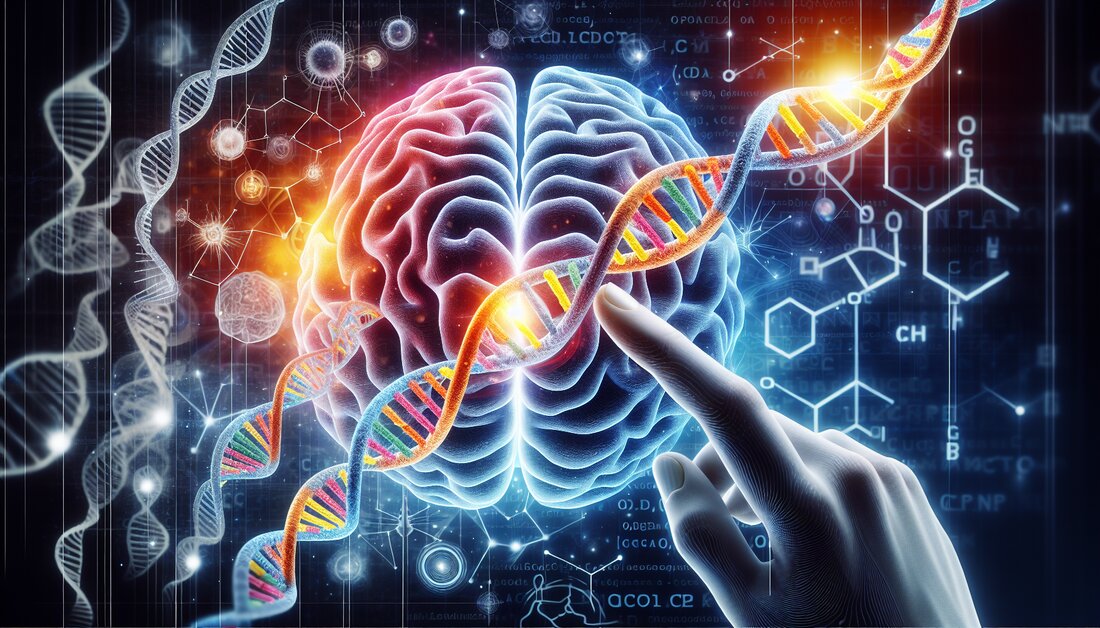Study shows how genetic changes in the SCN2A gene affect autism and epilepsy
A groundbreaking study shows how genetic changes in the SCN2A gene influence autism and epilepsy. Learn how these findings could revolutionize treatment options. #Genetics #Autism #Epilepsy

Study shows how genetic changes in the SCN2A gene affect autism and epilepsy
A genetic change or variant in a gene called SCN2A is a known cause of childhood seizures, autism spectrum disorder and intellectual disability, as well as a variety of other moderate to severe impairments in mobility, communication, nutrition and vision.
The severity of these disorders can vary greatly from person to person, but little is known about what happens at the level of the SCN2A protein that causes these differences.
A new study from Northwestern Medicine helps explain how changes in the SCN2A gene affect whether a child develops autism or epilepsy, the age at which seizures begin in those with epilepsy, and the severity of the child's other impairments.
The study was published on April 24thBraina top neurology journal.
These results will help better identify patients most suitable for clinical trials of new precision therapies, including those that target the SCN2A gene itself.
Analysis of sodium channels
The study represents a collaboration between an academic laboratory at Northwestern University and the FamilieSCN2A Foundation, a parent-led rare disease advocacy group. The SCN2A Clinical Trials Readiness Study (SCN2A-CTRS) recruited 81 families from around the world and collected detailed clinical data and information to identify their SCN2A variants. The average age was 5.4 years. The youngest participant was 1 month old and the oldest was 29 years old.
The Northwestern team analyzed in detail the functional effects of each SCN2A variant on sodium channels -; tiny gates in the membranes of nerve cells that control the flow of sodium ions into the cell and help neurons in the brain fire properly. Variants in the SCN2A gene change how the sodium channel works. Depending on the individual variant, the channel can be hyperactive (sodium ions flow more freely) or completely inactive (channel does not work at all). There are variants that make the channel work in a more complex way.
The study found a spectrum of effects of SCN2A variants on sodium channel function, from hyperactive channels to completely inactive channels. Importantly, the child's clinical status varied with the functional impact on the canal. Hyperactive channels were generally associated with seizure onset in the first week of life. Greater impairment of canal function occurred more frequently when the age of seizure onset was higher. In fact, almost all of the people without seizures had completely inactive sodium channels.
The severity of other disease-related features also followed this gradient, with those most severely impaired (unable to walk, communicate, eat, use their hands), having the youngest age at seizure onset, and having hyperactive channels. As age at seizure onset increased and channels became less active, severe neurological impairment in the child tended to be less severe.
We previously knew that genetic changes in the SCN2A gene are associated with seizures beginning as early as the neonatal period and continuing into the first few years of life. We had an overly simplified understanding of these relationships.
“Our new study clarifies the relationship between the functional consequences of SCN2A mutations, the primary phenotype (autism versus epilepsy and age at seizure onset in epilepsy patients), and the overall severity of the child's impairments (mobility, etc.).”
Dr. Alfred George,co-corresponding author,Chair of Pharmacology at Northwestern University Feinberg School of Medicine
Findings challenge prevailing understandings
There is a widespread belief among scientists that early-stage seizures are associated only with hyperactive sodium channels and that underactive or inactive channels are linked to autism, George said. However, it is more complicated, and in children with early onset –; in the first three months, but after the immediate neonatal period -; They don't have hyperactive channels.
“This is important because new precision medicines that are best suited to hyperactive SCN2A variants could be harmful to people with underactive or inactive variants,” George said. “Relying solely on age of seizure onset as a criterion for inclusion in clinical trials risks including inappropriate patients.”
Dr. Anne Berg, associate professor of neurology at Feinberg, principal investigator of the SCN2A-CTRS and co-author of the study, emphasized that “in the era of precision medicine for rare genetic diseases, this collaboration between a family foundation and a large.” The NIH-funded project is an example of the new partnerships needed and increasingly being developed to provide rapid answers to critical questions and lay the foundation for successful drug development for severe neurodevelopmental disorders such as those associated with SCN2A.”
The CTRS was driven by patient community stakeholders and represents exactly the type of effort promoted by the U.S. Food and Drug Administration's recent Patient-Centered Drug Development Lead Program, itself a response to a mandate from the 21st Century Cures Act, Berg said.
Christopher Thompson, research assistant professor of pharmacology at Feinberg, is one of the study's co-first authors.
Sources:
Berg, A.T.,et al. (2024). Expanded clinical phenotype spectrum correlates with variant function in SCN2A-related disorders. Brain. doi.org/10.1093/brain/awae125.

 Suche
Suche
 Mein Konto
Mein Konto